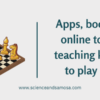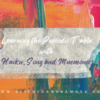Use Messy Learning to develop Critical Thinking in your Kids

The word ‘Messy’ has so much negativity around it that, even if we want to use it from a positive angle it is difficult. It is one of the most commonly pronounced words in the class or home by parents and teachers. But then if this word ‘Messy ‘is brought into the day-to-day learning process, it can accelerate your kid’s thinking process. Mark Twain said once, “A man who carries a cat by the tail learns something he can learn in no other way.”
What is ‘Messy Learning’
Messy learning is “non-linear” learning, while “clean learning” is like “linear” learning. Messy learning is like finding the end of the string from a ball of untidily rolled up wool. In the process of untying the knot, one learns not only to make the thread straight but also picks up the trait to solve a problem. Messy learning is all about getting a chance to solve the problem from beginning to end by deriving a new path, which was non-existent before. Messy learning motivates students to question, to think, to take risks, to fail, and then develop solutions.
How to introduce ‘Messy Learning’ to Kids
It is ideal to make possible ‘Messy Learning’ in school by introducing project-based learning. But then the whole system of grading and ranking has made it nearly impossible to implement it in school. Current overly structured classes kind of stifle creativity. So as parents we should take the initiative to help our kids pick up critical thinking through ‘Messy Learning’.
Where to start ‘Messy Learning’
Messy Learning for toddlers
Be happy if you are a parent to a toddler. This is the right age to start with messy learning. Earlier the better. You would be already doing a lot of messy learning-based activities at home by giving them play dough, allowing them to play with water and clay, handing over to them a bag full of lego blocks. In addition to this, you could also try
1. Growing a garden : Allow your kids to plant some seeds. Let them play with soil, pot, shovel, water and in the process learn about living things, plant nutrition, life etc
2. Recycling project: Never throw away the empty can, broken toys, and bottles. Let the painter in your child express his or her thoughts by painting on these used pots, clothes, bottles, etc.
3. Give them a board and marker pen: Give them an opportunity to draw anything under the sun to start with. Slowly give them themes like nature, vehicles, happy face, etc, and see what your child can come up with. The point is there is no right or wrong answer. This gives them the freedom to express their thoughts as it is
Messy learning for Young Learners
If your child is in the age group of 5-12, wherein they are already familiar with words, numbers and calculation you could try out these additional projects as well in addition to above mentioned ones.
1. Nature-based project: If you have access to a park or open area, take them there and ask them to find everything about one animal or insect (worm, squirrel, ladybug) and create it as a collage. How it looks like, Food it eats, where it lives, How its tail looks like, etc. Let them only create a collage using a mix of words and colors.
2. Food based activity: Ask kids to collect every available food in your house and group them into healthy and unhealthy. This can be such a great way to teach informational writing, math and nutrition.
3. Cook all the way: What better way to learn about measurement, number, and nutrition. Open your kitchen doors for your kids. Let them try out simple recipes by themselves like making salad, sandwich, simple rice dish like lemon rice, etc
Messy learning for Senior Kids
For senior kids who are fond of technology should be given projects involving technology, otherwise, they may not participate in them. Instead of asking them to collect information or create a collage, give them real fieldwork.
1. Follow the Bee: Take them to a place where they really grow bees or even a dairy farm. Set up tasks around that farm like wearing the farm suit, creating beehive, measuring the quantity of honey collected, setting up small stores to sell them, and sharing them on social media, etc. Students from Northland Pines Middle School, USA had done a live project around Bees called Beealive. You can check it out here to get some ideas. https://twitter.com/npmsbeeproject
2. Earth Expedition: Geography is relatively a boring subject. But then this can be made interesting by making wear the hat of explorer. Give them a country and ask them to collect and make as many things as they can about that country like flora and fauna, food habits, etc. Once it is done children can decorate the house according to the traditions of that country, cook food based out of that country and then explain to the family members all that they could find about the assigned country.
Reference: Create your own country
3. Run the home project: This is the best option to make kids understand all that happens at home. Mostly kids are completely unaware of the home budget, grocery management, and day-to-day chores. Put them in charge of the home with x amount of money and a checklist of activities they need to run.
What is your opinion about Messy learning.
Can you suggest some projects you try with your kids? Would love to hear from you all.









1 Response
[…] everything moving online, now it is possible to learn art and craft making even sewing through online classes. Also most of […]